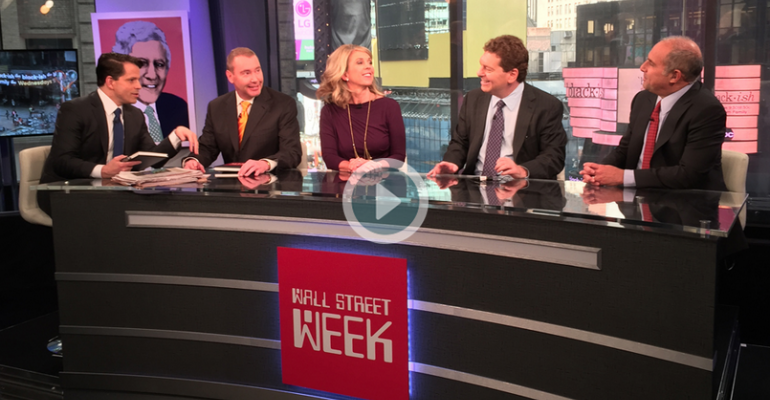Every Friday night for 32 years Americans watched Wall Street Week with Louis Rukeyser. Always crisply dressed, Rukeyser, who died in 2006, was the ideal financial talk show host: He had the air of a patrician but with a mischievous gleam in his eye and a cringe-worthy arsenal of puns which let middle-brow, middle-class America feel that high finance and the stock market was something they could, and in fact needed to, understand. His show was a far cry from today’s bombastic stock market coverage; it was sedate and intelligent, occasionally boring but never gratuitous or over the top. Earlier this year Anthony Scaramucci from Skybridge Capital has bought the rights to revive the show with a promise to preserve some of Rukeyser’s qualities; The first episode went live online April 19 with guest Jeffrey Gundlach from Doubleline Capital, Liz Ann Sonders, Schwab’s Chief Investment Strategist and Jonathan Beinner from Goldman Sachs Asset Managmeent. Gary Kaminsky, former CNBC host and Morgan Stanley’s vice chairman of wealth management, will co-host.

It seems bonds are the ugly stepchild no one wants to want. Over half (54 percent) of fund managers remain underweight on the segment in April, according to Bank of America-Merrill Lynch's monthly survey. So who’s buying them? Most of the demand is coming from retail investors, who are estimated to dump about $350 billion into bond funds this year after buying $500 billion last year, according to CNBC. Moreover, demand for bonds is likely to outstrip the global supply by about $450 billion this year, CNBC said, citing an earlier JPMorgan report.
Financial Services Down There with Government, Tobacco

Roughly two-thirds of the general public has a negative view of the financial services industry; only the government and tobacco sectors have worse reputations, according to the annual Harris Poll Reputation Quotient study. About one-third (35 percent) of those surveyed view financial services in a positive light, up from 11 percent six years ago. Some financial firms have better reputations than others. Fidelity and USAA, for example, have a “very good” reputation, while J.P. Morgan Chase, Citigroup, Bank of America, AIG and Goldman Sachs were in the “poor” range. That said, Citigroup and Bank of America showed the greatest improvement among financial companies, with Citigroup’s score up 12 points from 2010 and BofA’s score up 11 points since 2012.

In support of its quantitative approach to risk assessment, Riskalyze released a study Monday (registration required to receive report) that identified flaws in using client age to determine risk tolerance. According to Riskalyze, the traditional notion that younger clients must be more aggressive while older clients are more conservative is “often dead wrong.” Their research found that these stereotypes are incorrect for 52.9 percent of clients in their 20s and 53 percent of clients over the age of 70. Aaron Klein, Riskalyze’s CEO, said this creates a big misalignment between client expectations and what advisors are actually delivering, one that is avoidable using an approach to risk that prioritizes objective data.





